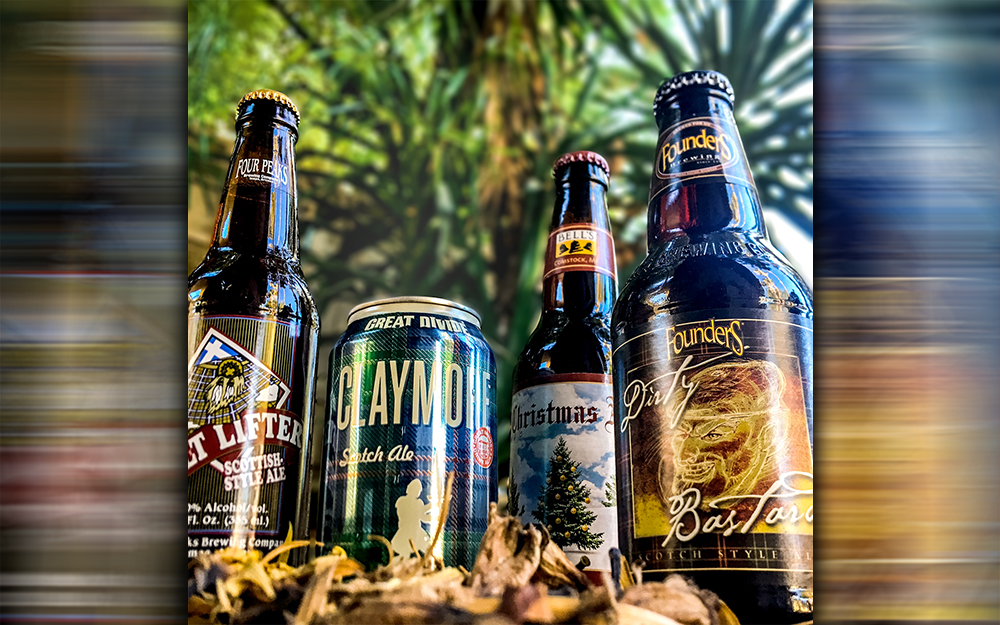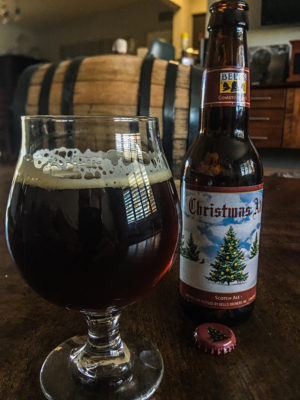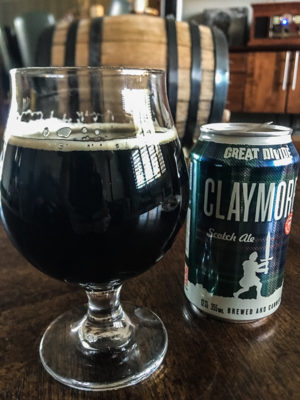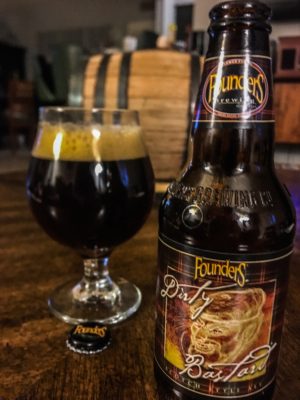
By Aaron Ramson
Fact: when I was eight years old, my favorite movie in the world was “Highlander”. Sure, sure; there were a lot of weird inconsistencies with that movie, most notably the accents. Why was Sean Connery, an actual Scotsman, playing a Spaniard without a Spanish accent? And why was Christopher Lambert (born in America but raised in France) playing a Scotsman without a Scottish accent? Call me detail oriented, but I couldn’t even watch Milo and Otis with the squad without pointing out the multiple pugs used in different scenes, since the bear fight part actually killed the original one. Yeah, I was real popular at parties. Anyway, Scotland has a long brewing history. That’s what we call a non-sequitur, kids!
Archaeologists have found evidence of ancient ales brewed by the Picts and then the Gaels. They were the ancient ancestors of the Scottish, and they’d create beer out of cereal grains, honey, and heather. Heather played a major role in the brewing history of the ancient Scots. Eventually, other herbs that enhanced the flavor of beer were found, and they were mixed together into a proprietary blend that was called gruit. There was no real recipe for gruit, each family kinda had their own version of it, and it’s what was used to bitter beer and bring balance to the cereal sweetness. Eventually, the peoples of Britain discovered the use of hops, which tastes much more pleasant in beer than all the weird stuff that went into gruit, but the Scots weren’t so lucky. Hops were hard to come by for them, so they evolved their style to be malty rather than hoppy, and to this day, that defines how we define Scottish beer.
The strongest and most flavorful Scottish beers are simply referred to as Scotch, or Wee Heavy ales. They are the antithesis of the IPA, malt bombs that can offer a variety of complex flavors with nary a hint of hops to be found. I went to the local Total Wine and picked out four different scotch ales to try.
KILT LIFTER – 6% ABV, Four Peaks Brewing, Tempe, AZ.
 The lowest ABV of the four, and the least representative of the style. With a reddish-copper color, the flavor is more American Amber ale than Wee Heavy, with a balanced middle ground reached between hop bitterness and malty sweetness. Not a bad beer, a good one in fact if you market it as anything but a Wee Heavy. If we choose to consider this a Scottish Export/ 80 Shilling ale, it fits that category a bit more. There are fruity esters to be found, a nice, dry and grainy character available, and even a lightly herbal finish from the addition of peat smoke, but this is much too bitter to be a representation of anything Scottish. 2.75/5
The lowest ABV of the four, and the least representative of the style. With a reddish-copper color, the flavor is more American Amber ale than Wee Heavy, with a balanced middle ground reached between hop bitterness and malty sweetness. Not a bad beer, a good one in fact if you market it as anything but a Wee Heavy. If we choose to consider this a Scottish Export/ 80 Shilling ale, it fits that category a bit more. There are fruity esters to be found, a nice, dry and grainy character available, and even a lightly herbal finish from the addition of peat smoke, but this is much too bitter to be a representation of anything Scottish. 2.75/5
CHRISTMAS ALE – 7.5% ABV, Bells Brewery, Comstock, MI.
 Pouring with a reddish-brown hue, this this beer possesses a toffee-like maltiness that dominates the palate, even tasting like chocolate-toffee candy on the finish. Despite the toasted, caramel flavors, there’s no real residual sweetness. This beer finishes dry and clean, with just enough hop bitterness to remind you that this is beer. As it warms, that same lightly-peaty note found in Kilt Lifter is present here. Bells created a very traditional Wee Heavy, devoid of any bells and whistles, and it gets the job done with expert-journeyman like efficiency. 4/5
Pouring with a reddish-brown hue, this this beer possesses a toffee-like maltiness that dominates the palate, even tasting like chocolate-toffee candy on the finish. Despite the toasted, caramel flavors, there’s no real residual sweetness. This beer finishes dry and clean, with just enough hop bitterness to remind you that this is beer. As it warms, that same lightly-peaty note found in Kilt Lifter is present here. Bells created a very traditional Wee Heavy, devoid of any bells and whistles, and it gets the job done with expert-journeyman like efficiency. 4/5
CLAYMORE- 7.7% ABV, Great Divide Brewing, Denver, CO
 Dark brown with only the faintest garnet hues around the edges of the glass, this beer is by far the darkest representation of the style. Dark chocolate flavors dominate, with toffee and dried-fruit flavors lending a hand to create a wonderfully delicious, almost dessert-beer. There’s a sweetness to this beer, but it’s kept from being cloying by the firm bitterness that’s anchored at its core. This beer is at the high limits of the Wee Heavy parameters, and that’s a good thing. 4.75/5
Dark brown with only the faintest garnet hues around the edges of the glass, this beer is by far the darkest representation of the style. Dark chocolate flavors dominate, with toffee and dried-fruit flavors lending a hand to create a wonderfully delicious, almost dessert-beer. There’s a sweetness to this beer, but it’s kept from being cloying by the firm bitterness that’s anchored at its core. This beer is at the high limits of the Wee Heavy parameters, and that’s a good thing. 4.75/5
DIRTY BASTARD- 8.5% ABV, Founders Brewing, Grand Rapids, MI
 Brown with ruby red highlights, this beer has the prettiest color of the four. On first sip, there’s an immediately smoky, phenolic character. I’m going to be real fam; to this reviewer, phenols are gross AF. They taste the way band-aids smell. Phenols taste like chemicals and rubber. It’s that reason why I’ve never been a fan of scotch whiskey. It’s off putting to me, and I can’t appreciate it. Apparently, peat is behind the taste of phenols in scotch, and Founders loads their ale up with them in a way that puts all the other beers I’ve tried today to shame. For an 8.5% ABV ale, Dirty Bastard does not come across as sweet or candy-like, rather it is semi-dry with a profile that leans towards the malty. With chocolate-caramel flavors picking up where the peat flavor tapers off, this version of a scotch attempts literally to emulate the flavors of a scotch whiskey. 4.25/5
Brown with ruby red highlights, this beer has the prettiest color of the four. On first sip, there’s an immediately smoky, phenolic character. I’m going to be real fam; to this reviewer, phenols are gross AF. They taste the way band-aids smell. Phenols taste like chemicals and rubber. It’s that reason why I’ve never been a fan of scotch whiskey. It’s off putting to me, and I can’t appreciate it. Apparently, peat is behind the taste of phenols in scotch, and Founders loads their ale up with them in a way that puts all the other beers I’ve tried today to shame. For an 8.5% ABV ale, Dirty Bastard does not come across as sweet or candy-like, rather it is semi-dry with a profile that leans towards the malty. With chocolate-caramel flavors picking up where the peat flavor tapers off, this version of a scotch attempts literally to emulate the flavors of a scotch whiskey. 4.25/5
You best believe a nap was required after day-drinking that much Wee Heavy, but Great Divide’s Claymore Scotch Ale wins today’s taste test. The rich flavors captured my palate with an almost porter-like flavor, but Dirty Bastard was also very good. This style of beer is wonderful to drink in this cooler weather and could very well and up your next favorite beer.








































